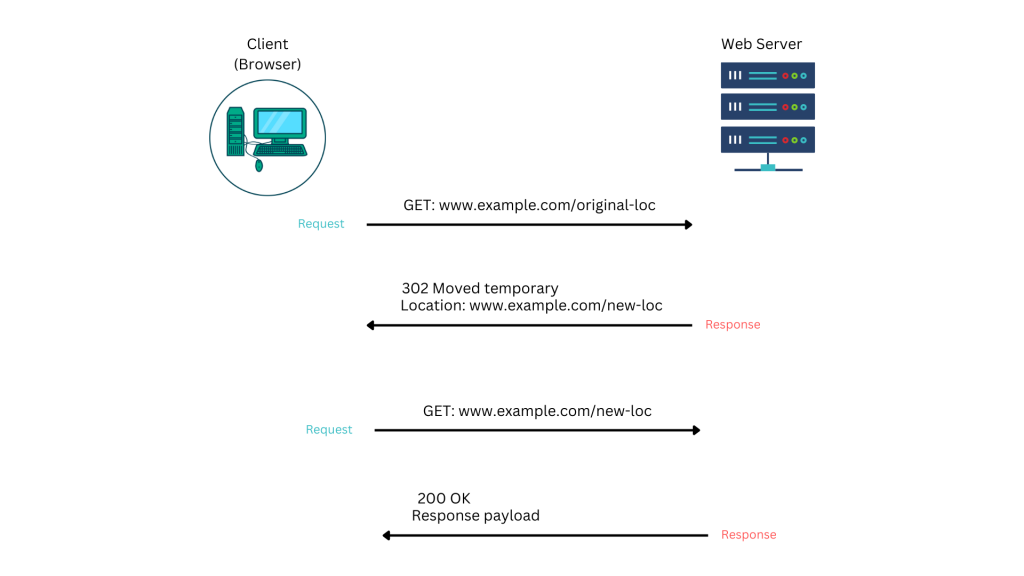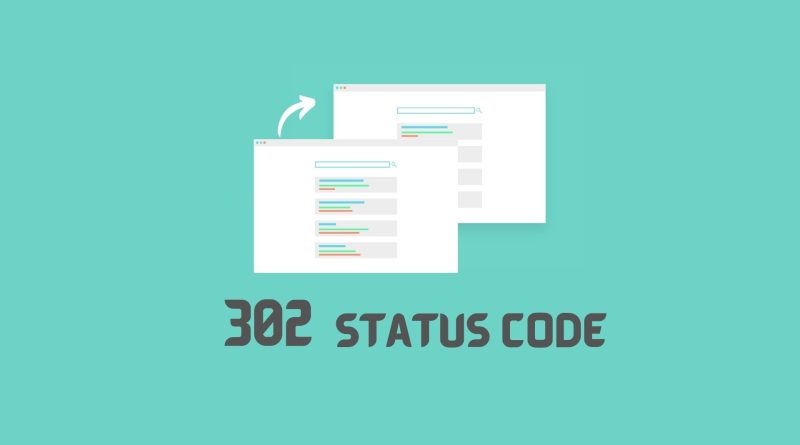HTTP Code 302: The Redirection Secret to Boosting Your Website Traffic
The HTTP (Hypertext Transfer Protocol) 302 status code is one of the most common http status codes used on the web. It indicates that a resource has been temporarily moved to a new location. In that case most browsers will automatically redirect users to the new location. In this article, we’ll discuss what the 302 status code means and how it works. We’ll go over how to implement this code on your website and provide some pointers on utilizing it effectively.
What is the http code 302 and how it works?
The 302 HTTP status code is a temporary status code that indicates that the requested resource has been temporarily moved to a new location.

When a user agent (browser) searches for a specific link on a website, the browser is making a GET request to the web server. If the requested resource has been temporarily moved, then the server response will be a 302 status code. The new location is given in the Location header of the response. The user agents (browsers) then will use it to automatically redirect the user by making a new request. If the new URL exists and works properly, then the user will get a 200 ok status code from the web server.
How HTTP Code 302 affect SEO
When you use a 302 status code on your website, it tells search engines that target resource resides temporarily to different place. This means that the search engine such as google search engine, it will not remove the page from its index, but it will keep track of the new location so that users can be redirected automatically. On the other hand, if the search engines see 404 status code, they will understand that the resource is no longer available and will remove it from their index.
302 status code is very important for websites as it allows them to maintain SEO stats and their rankings on search engine result pages (SERP). When a web page is temporarily moved, search engines can still find it and show it in their results because it keeps the original page for future requests. This is beneficial for websites as it allows them to make changes without losing their position on SERPs.
If you want to permanently redirect a page, you should use 301 status code. using 302 status code for permanent redirects can result in your website’s rank being downgraded.
In general, it is best to use 302 status code only when the move is temporary, and you are sure that you will be able to bring the page back soon. If you are not sure about the move being temporary, it is best to use 301 status code. Search engines will then update their records accordingly.
It’s important to note that the 302 status code should only be used for temporary redirects. If you’re planning to move a file or directory permanently, you should use the 301 status code instead.
How to implement 302 redirects?
Redirecting your website traffic is important for a variety of reasons. Whether you’re changing domains, implementing a new design, or wanting to optimize your site for search engines. There are different ways of redirecting traffic on your website. Using the web server’s configuration file, using the .htaccess file (if your webserver is Apache) or through a plugin.
Configuration file
The web server hosting your website hasconfiguration file which stores the redirect commands for your web server. The specific commands needed depend on what type of web server software you’re using. Each one has different command structures.
.htaccess file
The .htaccess file is a configuration file that is used by Apache web servers. It allows you to modify the settings for your website and control how it functions. In order to use 302 redirects with the .htaccess file, you need to add the following code:
# Redirect to a URL on a different host
Redirect temp "/service" "http://www.example.com/service"
# Equivalent redirect to URL on the same host
Redirect temp "/original-loc" "/new-loc"Plugins
If you’re not comfortable editing your website’s .htaccess file and you’re running a website on a CMS platform like WordPress or Tumblr, there are plugins available that allow you to easily set up redirects – including 302 redirects. You just enter the old and new URL, and the plugin will take care of the rest. This makes it easy to manage your website’s redirects, without having to edit any code yourself.
There are a number of different plugins available for various platforms. So, be sure to check out the options before you decide which one is best for you. Here are four of the top redirect plugins for WordPress:
1. Redirection: Redirection is a WordPress plugin that allows you to easily manage your website’s redirects. It provides a simple interface for adding and editing redirects, and makes it easy to set up 302 redirects.
2. Quick Page/Post Redirect Plugin: If you need to quickly redirect a page or post on your website, the Quick Page/Post Redirect Plugin is a great option. It allows you to quickly create a 301 or 302 redirect without having to edit any code. This makes it easy to manage your website’s redirects, without having to learn how to use code.
3. Safe Redirect Manager: The Safe Redirect Manager plugin is another option for managing your website’s redirects. It provides an easy-to-use interface for adding, editing, and deleting redirects. In addition, it offers features like automatic redirection and regex support.
4. Yoast SEO Premium: Yoast SEO Premium is a popular WordPress plugin that helps you optimize your website for search engines. In addition to providing basic SEO features, Yoast SEO Premium also includes a feature that allows you to add 301 and 302 redirects.
When to use http code 302
You can use 302 redirections to temporary redirect users to a different page. You can often use them when a website is undergoing maintenance or updates. They can also be used to point users to the correct version of a website for different countries). 302 redirects are not typically used for SEO purposes, as they are not permanent and do not pass link equity. However, in some cases, 302 redirects may be the best option for SEO purposes. For example, if you need to redirect users to a mobile version of your website. If you do use 302 redirects for SEO purposes, be sure to set up the redirection properly so that search engines can crawl and index your pages correctly.
All HTTP status codes by categories
Informational responses
(100 – 199)



